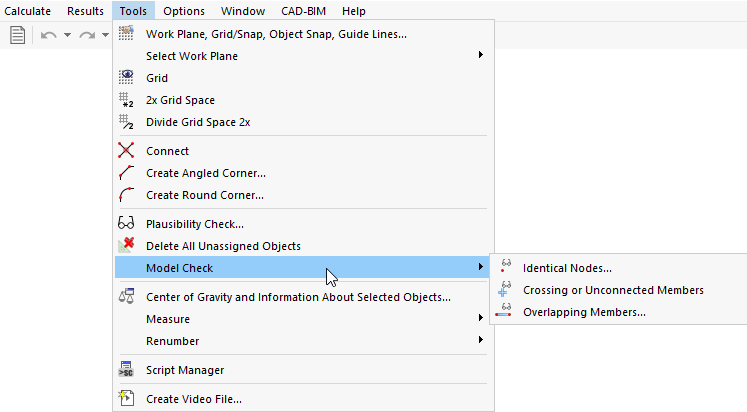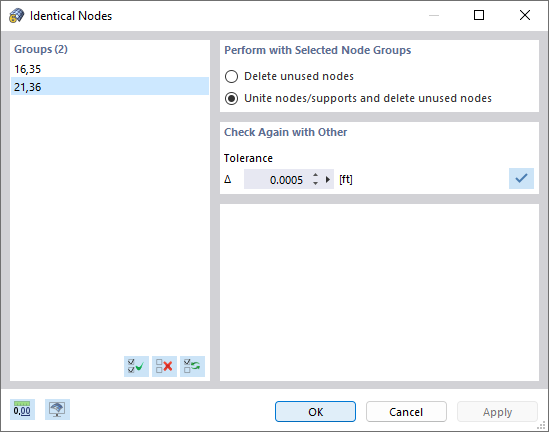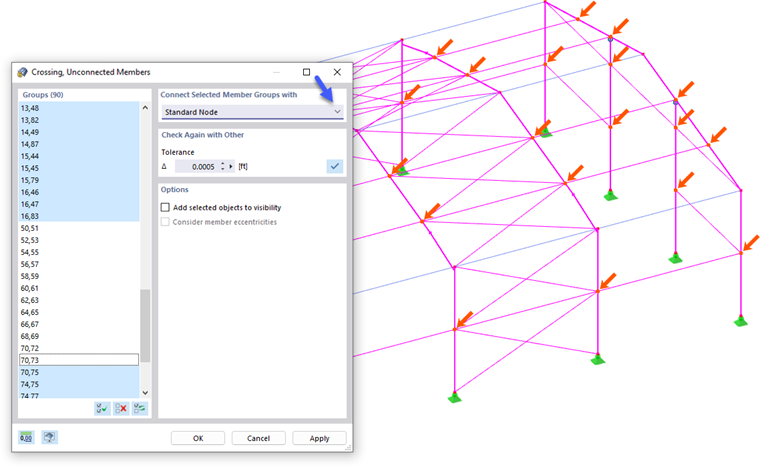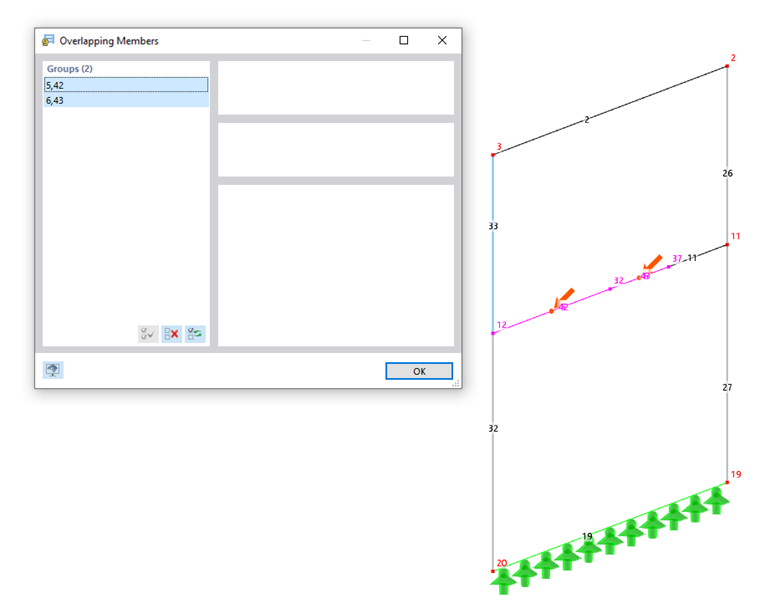In addition to the general plausibility check, you can use the model check to specifically search for discrepancies produced during the modeling. In the Tools menu, select Model Check to access various options.
Identical Nodes
RSTAB filters all nodes with identical coordinates. They are combined into groups and shown in a dialog box.
In the "Perform with Selected Nodal Groups" dialog section, you can define how to handle duplicate nodes. Click "Apply" or "OK" to clean the selected group(s).
The "Check Again with Other Tolerance" dialog section allows you to fine-tune distances by which coordinates are considered to be identical. This feature is useful for imported models because CAD applications often create short members with nodes that are close together. If such nodes are filtered with a suitable tolerance and then unified, it is possible to avoid numerical problems due to short members.
Crossing or Not Connected Members
The check searches for members that cross each other but do not have a common node at the point of intersection.
The check result is displayed for "Groups" of crossing members where there is no connection. When you select an entry, the group is marked by an arrow in the work window.
In the "Connect Selected Member Groups with" dialog section, specify the node type with which you want to connect the selected group(s). There are two types of nodes available for selection in the list:
Standard nodes lead to a division of the members at the crossing points as well as to new members. With the "Node on Member" type, however, it is possible to model member connections without dividing the original members.
To connect the selected member groups, click "Apply" or "OK". Then, RSTAB creates the corresponding nodes at the crossing points.
The "Check Again with Other Tolerance" dialog section allows you to fine-tune distances.
Optionally, you can use the "Add selected objects to visibility" function to create a visibility in order to explicitly check the selected member group(s). The "Consider member eccentricities" check box controls whether the eccentricities of the members should also be included when checking the connections.
Overlapping Members
The check finds members that lie in their length partially or completely on top of each other.
The displayed overlapping members are sorted by groups. In the work window, the current group is indicated by an arrow. Click "OK" to fix the problem and divide the members into sections.



